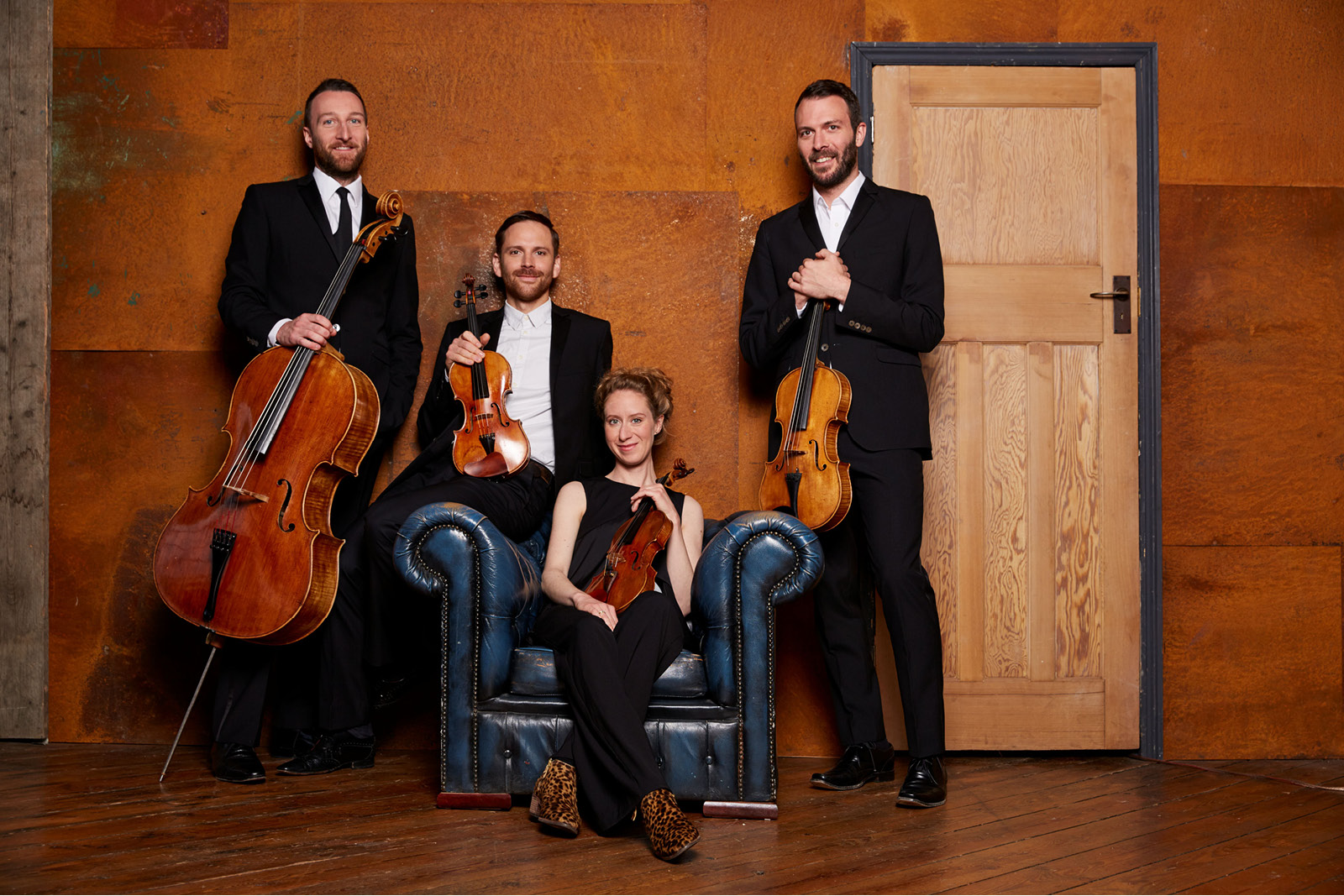It is always a distinct pleasure to hear chamber music performances at UKARIA Cultural Centre with its tranquil setting and excellent acoustics. Britain’s Heath Quartet is undoubtedly one of the finest youthful ensembles on the planet with excellent reviews and awards from the prestigious Gramophone and Limelight magazines for their recordings of Bartók and Tippett. And given the warmth with which its trio of concerts devoted to string quartets by Beethoven and Tippett were received, the quartet is bound to create a sensation amongst Australian audiences.
 The Heath Quartet. Photo © Simon Way
The Heath Quartet. Photo © Simon Way
Sir Michael Tippett’s reputation has been overshadowed by his friend and contemporary Benjamin Britten and yet his cycle of five quartets, whilst rather uncompromising in their structure and purpose, have won this group of musicians wide acclaim. And upon hearing them in what is perhaps the finest of them all, Quartet No 3, it is simple to see what the fuss is all about. Written in 1945, the quartet is amongst the earliest of Tippett’s post-war compositions – a large schemed work which breaks away from the traditional quartet structure, replacing it with a five movement arc-like structure similar to Bartók’s Fourth Quartet. In fact this quartet owes much to Bartók with its ‘night music’ scurrying, unworldly figures and plucked cello lines within its slow movements. The Heaths delivered a convincing performance of the work and amazed with the quality of their musicianship. They knew this work intimately and seemed at times to breathe and play as one, such was their commitment to this under-rated composer. The contrapuntal interplay was flawless and the range of dynamics and tonal colour that these musicians brought to this often cerebral work was equally so. Here was a perfect marriage of Purcellian elegy with 20th-century technique. And of course being amongst the earliest of his post WWII compositions, it was written against a background of much emotional turmoil in Tippett’s life, including imprisonment as a conscientious objector, not mention his position of outsider as a homosexual. I would also suggest that Tippett himself was very happy with the work as he would not create another quartet for 30 years.
From Tippett it was onto more familiar territory – Beethoven and the third of his Razumovsky quartets, Op. 57, No 3. Though often regarded as a period of transition, these quartets show the composer striking out into unknown waters in terms of compositional experimentation and the serious onset of deafness. From the opening measures of the first movement, here was an engaging and muscular performance, one which made light work of the work’s highly contrapuntal textures. The work opens with an unresolved chord before displaying a chromatic richness which preempts Romanticism whilst looking backwards to the folk-dances of Haydn. Here the Heath Quartet displayed a big sound which bordered on the orchestral, with the first violinist really ‘singing’ the line. Yet again the musicians played intimately and rhythmic precision, only to explode with Beethovenian passion. Here was an interpretation which blew the cobwebs from the work, granting it a quality which can only be described as fresh and contemporary.
Next in the afternoon came two rather familiar piano trios – Beethoven’s ‘Archduke’ and Shostakovich’s Trio No 2, Op. 67. The idea of bringing together three fine soloists who have individual careers to play Beethoven’s Trio is a familiar one. In fact the recorded catalogue is almost littered with performances, and most have discovered the work on disc. Think of the number of virtuosi who have come together for this purpose – pianists Cortot, Barenboim and Kempff, violin from Thibaud, Menuhin, Heifetz and Zukerman and cellists of the calibre of Casals, Rostropovich and Dupré. The trio of violinist Anthony Marwood with Australian Chamber Orchestra stalwart Timo-Veikko Valve and pianist Stefan Cassomenos gave fine performances of both works without resorting to grandstanding. In these performances it was the composer who was important, yet for the listener, it was almost like eavesdropping on a private performance or a very fine example indeed of hausmusik. The musicians were equally at home in the sound world of both composers with Valve excellent in the darker sonorities of Shostakovich, though the final movement was played with spark and an appropriate tautness (making the links with the later Eighth Quartet readily apparent) in this often plaintive and punchy piece. Things were equally adept within the Beethovenian sound world leading to a very rare afternoon of truly eloquent chamber music performances.











Comments
Log in to join the conversation.